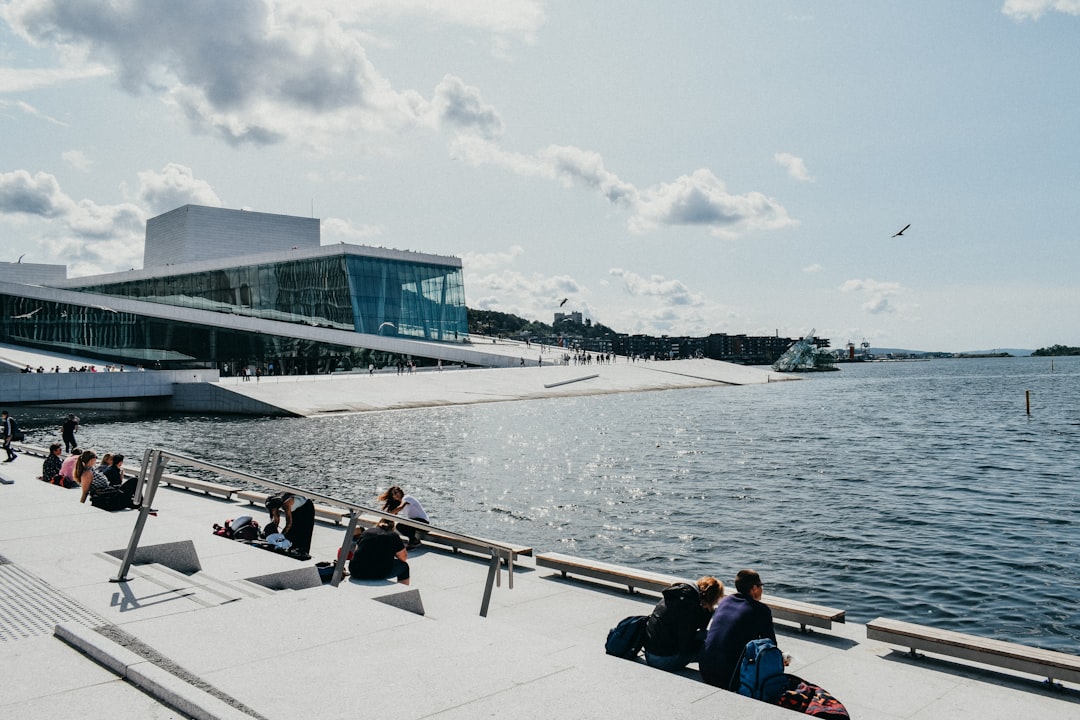Norway is a country rich in linguistic diversity, with two official written forms of the Norwegian language: Bokmål and Nynorsk. Bokmål, which is more widely used, is derived from Danish and is the preferred choice in urban areas, while Nynorsk, created in the 19th century, is based on rural dialects and is predominantly used in western Norway. This duality can be both a challenge and an opportunity for learners, as it offers a unique insight into the cultural and historical context of the nation.
Understanding this landscape is crucial for anyone looking to learn Norwegian, as it shapes not only the language itself but also the way it is spoken across different regions. Moreover, dialects play a significant role in the Norwegian language experience. With over 400 distinct dialects, each region boasts its own variations in pronunciation, vocabulary, and even grammar.
This diversity can be daunting for newcomers, but it also enriches the learning process. Engaging with various dialects can enhance one’s listening skills and provide a deeper appreciation for the nuances of the language. As learners navigate this intricate linguistic terrain, they will find that immersing themselves in the local dialects can greatly enhance their communication skills and cultural understanding. Take the first step. Book a consultation with the Norway Relocation Group for your move to Norway.
Summary
- Norwegian has two official written forms, Bokmål and Nynorsk, and a variety of regional dialects, making the language landscape diverse and rich.
- Learning basic Norwegian phrases and expressions is essential for everyday communication and building rapport with locals.
- Language learning apps and resources like Duolingo, Babbel, and online courses can be valuable tools for self-study and practice.
- Joining language exchange meetups and groups can provide opportunities for real-life conversation and cultural exchange with native speakers.
- Taking formal language classes or courses from reputable institutions can offer structured learning and guidance in mastering Norwegian.
Learning Basic Norwegian Phrases and Expressions
Starting with basic phrases and expressions is an essential step for anyone embarking on their journey to learn Norwegian. Simple greetings such as “Hei” (Hello) and “Takk” (Thank you) can go a long way in establishing rapport with native speakers. Additionally, familiarising oneself with common expressions like “Hvordan har du det?” (How are you?) or “Jeg forstår ikke” (I don’t understand) can facilitate smoother interactions in everyday situations.
These foundational phrases not only serve practical purposes but also help learners feel more confident when engaging with locals. Furthermore, incorporating these phrases into daily life can significantly enhance retention. Practising them in real-life scenarios, such as ordering coffee or asking for directions, allows learners to apply their knowledge actively.
This experiential learning approach reinforces memory and builds confidence. As learners progress, they can gradually expand their vocabulary to include more complex phrases and idiomatic expressions, enriching their conversational skills and enabling them to express themselves more fluently.
Utilising Language Learning Apps and Resources

In today’s digital age, language learning apps have revolutionised the way individuals acquire new languages. Applications such as Duolingo, Babbel, and Memrise offer interactive lessons that cater to various learning styles. These platforms provide a flexible approach to learning Norwegian, allowing users to practise at their own pace and revisit challenging concepts as needed.
The gamified elements of these apps make the learning process enjoyable and engaging, encouraging consistent practice. In addition to mobile applications, there are numerous online resources available for learners of Norwegian. Websites like NorwegianClass101 and LearnNoW offer structured courses that cover grammar, vocabulary, and pronunciation.
These resources often include audio recordings by native speakers, which are invaluable for honing listening skills and improving pronunciation. By combining these digital tools with traditional study methods, learners can create a well-rounded approach to mastering the Norwegian language.
Joining Language Exchange Meetups and Groups
Participating in language exchange meetups is an excellent way to practise Norwegian in a social setting while also meeting new people. These gatherings often bring together individuals from diverse backgrounds who share a common goal: to learn and improve their language skills. Engaging in conversation with native speakers provides invaluable real-world experience that cannot be replicated through textbooks or apps alone.
It allows learners to hear authentic speech patterns and colloquialisms while also gaining insights into Norwegian culture. Moreover, language exchange groups foster a supportive environment where learners can feel comfortable making mistakes and asking questions. This camaraderie encourages participants to share tips and resources, creating a collaborative learning atmosphere.
Many cities in Norway host regular meetups, making it easy for learners to find opportunities to practise their skills. By actively participating in these groups, individuals can significantly enhance their fluency while building lasting friendships along the way.
Taking Formal Language Classes or Courses
For those seeking a more structured approach to learning Norwegian, enrolling in formal language classes or courses can be highly beneficial. Many institutions offer comprehensive programmes tailored to different proficiency levels, from beginners to advanced speakers. These classes typically cover essential aspects of the language, including grammar, vocabulary, reading comprehension, and conversation skills.
The guidance of experienced instructors can provide valuable feedback and personalised support that self-study may lack. One notable option for formal language education is the NLS Norwegian Language School in Oslo. Renowned for its immersive teaching methods and experienced faculty, NLS offers a range of courses designed to cater to various learning needs.
Whether you are looking for intensive courses or part-time classes that fit around your schedule, NLS provides a welcoming environment for learners of all backgrounds. The school’s focus on practical communication skills ensures that students leave feeling confident in their ability to engage with native speakers.
Immersing Yourself in Norwegian Culture and Media

Immersion is one of the most effective ways to learn a new language, and Norway offers a wealth of cultural experiences that can enhance language acquisition. Engaging with Norwegian media—such as films, television shows, music, and literature—can provide learners with exposure to authentic language use in context. Watching popular Norwegian films or listening to local music not only improves listening skills but also deepens cultural understanding.
Additionally, participating in cultural events or festivals can further enrich the learning experience. From traditional folk festivals to contemporary art exhibitions, these events offer opportunities to interact with locals while practising language skills in a relaxed setting. By embracing the cultural aspects of Norway alongside language study, learners can develop a more holistic understanding of the language and its speakers.
Seeking Out Language Support Services
Navigating the complexities of learning a new language can sometimes be overwhelming, which is why seeking out language support services can be incredibly helpful. Many communities offer resources such as tutoring services or conversation partners who can provide personalised assistance tailored to individual needs. These services often focus on specific areas of difficulty, whether it be pronunciation, grammar, or conversational fluency.
In addition to one-on-one support, online forums and social media groups dedicated to language learning can also serve as valuable resources. Engaging with fellow learners allows individuals to share experiences, ask questions, and receive encouragement from others on similar journeys. By utilising these support services, learners can overcome challenges more effectively and stay motivated throughout their language-learning process.
Using Translation Tools and Apps
While immersion and practice are crucial for mastering a new language, translation tools and apps can serve as useful aids during the learning process. Applications like Google Translate or Microsoft Translator provide instant translations for words or phrases that may be unfamiliar. These tools can be particularly helpful when navigating everyday situations where immediate comprehension is necessary.
However, it is essential to use translation tools judiciously. Relying solely on them may hinder the development of language skills over time. Instead, learners should view these tools as supplementary resources that can assist them in moments of uncertainty while they continue to build their vocabulary and understanding of Norwegian grammar.
Practising Patience and Persistence
Learning a new language is a journey that requires patience and persistence. It is common for learners to encounter obstacles along the way—whether it be difficulty with pronunciation or challenges in grasping complex grammatical structures. Embracing these challenges as part of the learning process is essential for long-term success.
Setting realistic goals and celebrating small achievements can help maintain motivation during times of frustration. Moreover, consistency is key when it comes to language learning. Regular practice—whether through speaking with native speakers, studying vocabulary daily, or engaging with media—will yield significant improvements over time.
By cultivating a mindset of perseverance and dedication, learners will find themselves making steady progress towards fluency.
Embracing Non-Verbal Communication
Language is not solely about words; non-verbal communication plays a vital role in conveying meaning and emotion. Gestures, facial expressions, and body language can enhance understanding during conversations, especially when language barriers exist. Being aware of these non-verbal cues can help learners navigate social interactions more effectively.
Additionally, embracing non-verbal communication allows learners to express themselves even when they may struggle with vocabulary or grammar. A smile or nod can convey friendliness and openness, fostering positive connections with others despite linguistic limitations. By integrating non-verbal communication into their interactions, learners can build rapport with native speakers while continuing to develop their verbal skills.
Seeking Out Bilingual or English-Speaking Communities
For those who may feel overwhelmed by the prospect of immersing themselves fully in Norwegian culture right away, seeking out bilingual or English-speaking communities can provide a supportive transition into the language-learning journey. Many cities have expat groups or international clubs where English is commonly spoken; these spaces allow newcomers to connect with others who share similar experiences while gradually introducing them to the local culture. Engaging with these communities can also provide opportunities for informal language practice without the pressure of complete immersion.
As learners become more comfortable with their skills, they can gradually transition into more Norwegian-speaking environments. This gradual approach helps build confidence while ensuring that individuals do not feel isolated during their learning process. In conclusion, embarking on the journey of learning Norwegian opens up a world of opportunities for personal growth and cultural enrichment.
By understanding the linguistic landscape of Norway, utilising various resources such as apps and formal classes like those offered at NLS Norwegian Language School in Oslo, engaging with local communities through meetups or cultural events, and practising patience throughout the process, learners can navigate this exciting adventure successfully. Embracing every aspect of this journey will not only lead to fluency but also foster meaningful connections within Norway’s vibrant society.
Learn more about the Norwegian classes at the NLS Norwegian Language School in Oslo

